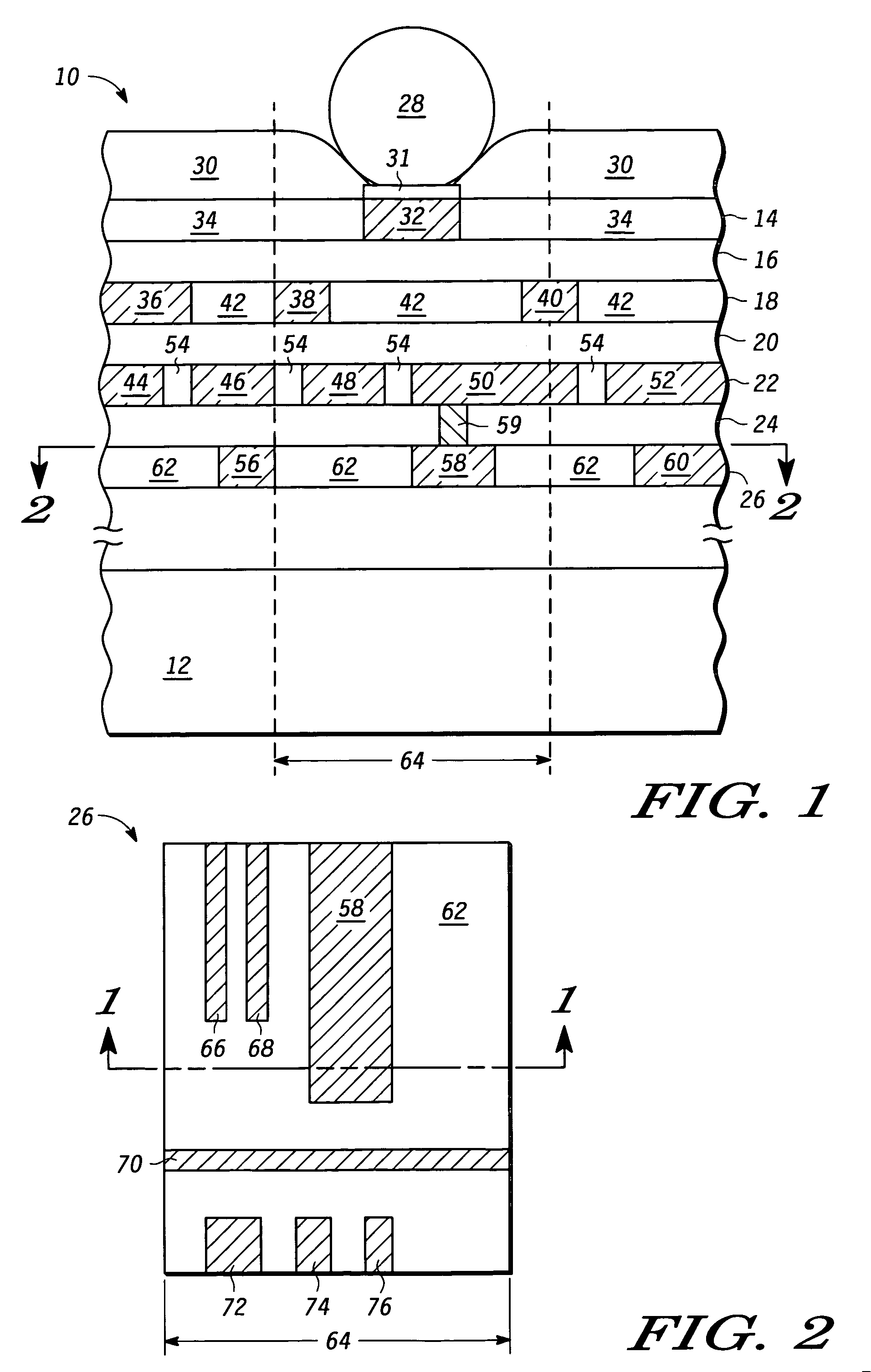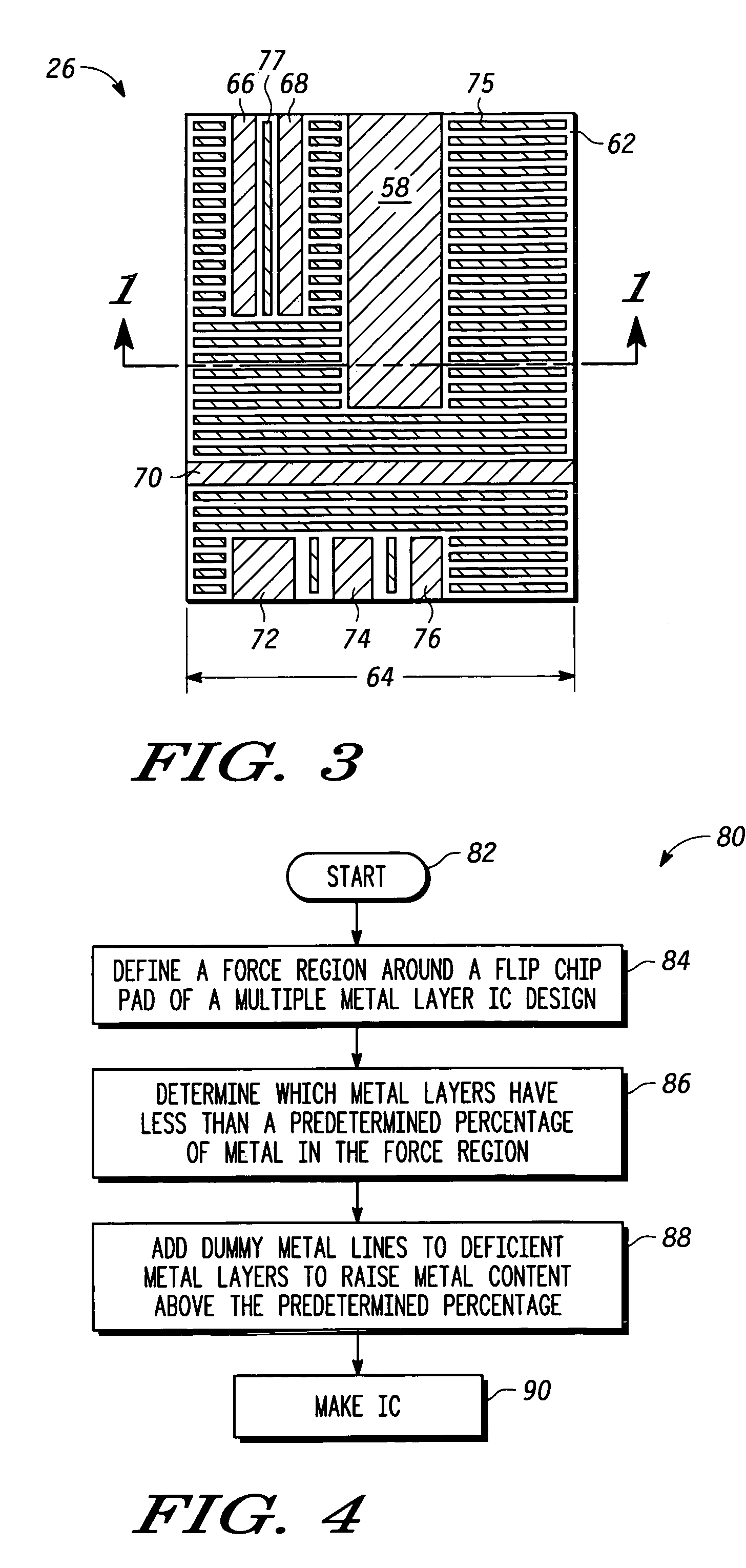Integrated circuit having structural support for a flip-chip interconnect pad and method therefor
a technology of flip-chip interconnect pads and integrated circuits, which is applied in the direction of semiconductor devices, semiconductor/solid-state device details, electrical apparatuses, etc., can solve the problems of increased stress on the bond pad structure, low dielectric constant (low-k) dielectrics susceptible to mechanical damage, and bond pad structures fabricated with copper interconnect metallization and low-k dielectrics are susceptible to mechanical damag
- Summary
- Abstract
- Description
- Claims
- Application Information
AI Technical Summary
Benefits of technology
Problems solved by technology
Method used
Image
Examples
Embodiment Construction
[0013]Generally there is herein provided a method and apparatus for providing structural support for interconnect pad locations in an integrated circuit (IC) by using novel layout techniques in the metallization and dielectric stack underlying the pad. As used herein, an interconnect pad, formed of metal, is placed at the surface of an integrated circuit where an electrical connection is made from the pad to one or more underlying interconnect layers. In a typical IC design, multiple interconnect layers separated by interlevel dielectrics are formed in a stack to provide the required interconnections between devices in the semiconductor substrate. Examples of an interconnect pad include, but are not limited to, a wire bond pad, a probe pad, a flip-chip bump pad, a test point or other packaging or test pad structures that may require underlying structural support. The interconnect pad region, located physically underneath the interconnect pad, defines the region in which the layout t...
PUM
 Login to View More
Login to View More Abstract
Description
Claims
Application Information
 Login to View More
Login to View More - R&D
- Intellectual Property
- Life Sciences
- Materials
- Tech Scout
- Unparalleled Data Quality
- Higher Quality Content
- 60% Fewer Hallucinations
Browse by: Latest US Patents, China's latest patents, Technical Efficacy Thesaurus, Application Domain, Technology Topic, Popular Technical Reports.
© 2025 PatSnap. All rights reserved.Legal|Privacy policy|Modern Slavery Act Transparency Statement|Sitemap|About US| Contact US: help@patsnap.com



